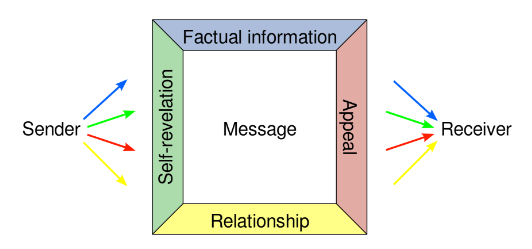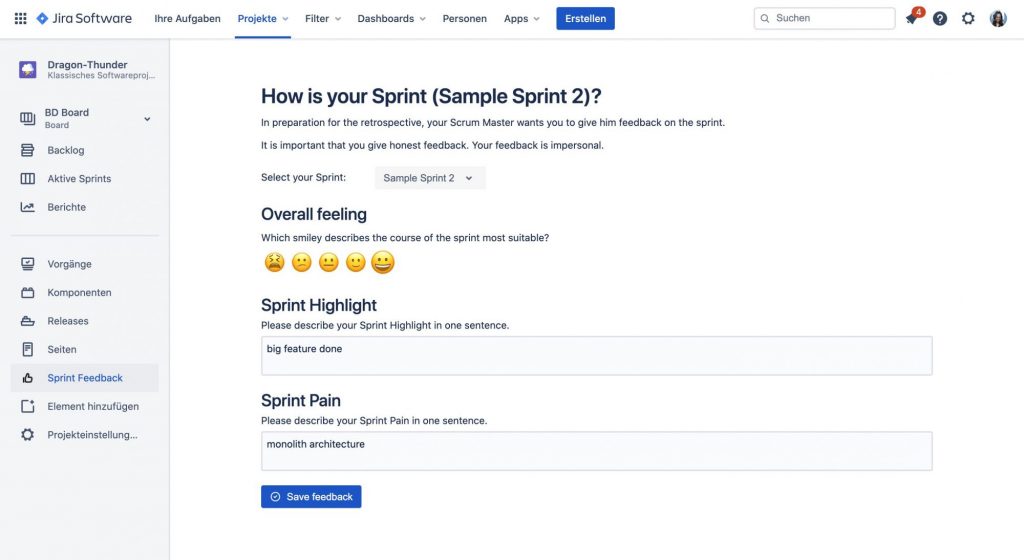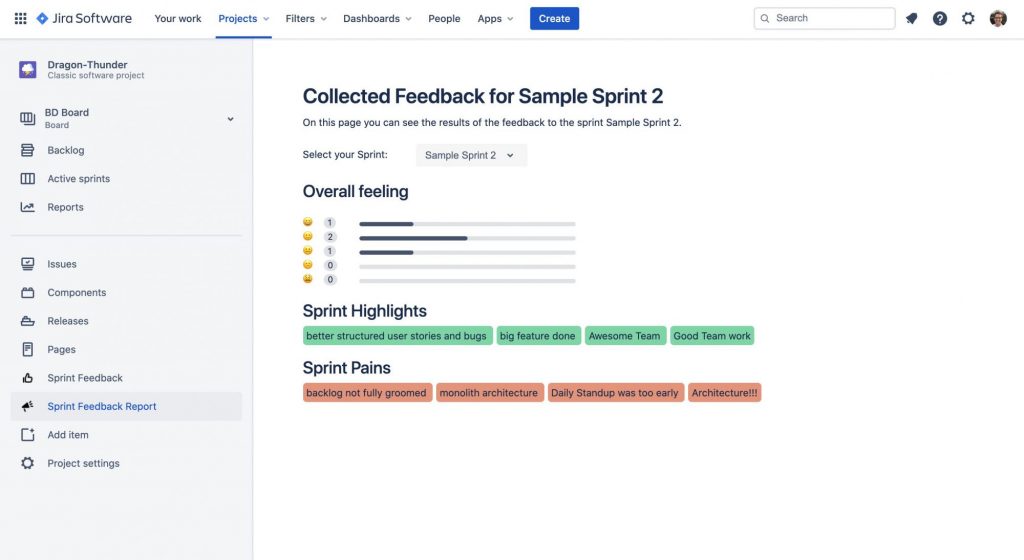Giving good feedback is not easy and requires continuous practice. That’s why I would like to show in this article how to give constructive feedback with 5 simple tips and how to express criticism in a positive way.
Misunderstandings in communication
From your own experience you know that your message does not have to be understood by the recipient as you actually meant it. Such misunderstandings are unpleasant and can lead to conflict. Why this happens, you will find out in the next section.
4 sides model
The 4 sides model by Friedemann Schulz von Thun shows in an understandable way why the message originates with the recipient. Among other things, it states that each message from a sender transports four levels.

- The Factual Level: Facts, figures, data
- The Self-revealing: Me and my condition
- The relationship indicator: How we stand to each other, what I think of you
- The Appeal: What I want
The recipient of the message gives these four levels their own meaning. This is exactly why you cannot be sure that the other person understands the message the way you meant it. Especially the tone of voice, the environment and posture etc. have a great influence on how the message is received by the recipient.
Example:
Two people are eating a home-cooked meal together. The one who didn’t cook says: “There is something green in the soup.”
Sender:
| Factual level: | There is something green. |
| Self-revealing layer: | I don’t know what it is. |
| Relationship layer: | You should know what it is. |
| Appeal layer: | Tell me what it is! |
Receiver:
| Factual level: | There is something green. |
| Self-revealing layer: | You do not know what the green item is, and that makes you feel uncomfortable. |
| Relationship layer: | You think my cooking is questionable. |
| Appeal layer: | I should only cook what you know in the future! |
The other answers: “If you don’t like the taste, you can cook it yourself.”
Each layer of the model can be misunderstood individually. The sender might want to deliver an appeal. The receiver will understand the message depending on the ear he listens with. He might rightly hear the appeal, but he might also just hear it as factual information. This leads to misunderstanding, frustration and potential conflict (e.g. the appeal isn’t being fulfilled).
To get more insights on this topic, check this article from Victoria Schiffer on medium.com.
Start with the feedback rules
Despite the described pitfalls in communication, you should not be discouraged to give feedback. The following 5 tips will help you to formulate constructive feedback and create the rules on applying feedback.
Unwanted feedback can cause harm, it can reduce motivation or worsen the relationship between the person giving feedback and the recipient. Mutual feedback should help the team to become better, which means honestly addressing weaknesses and showing potential. Therefore, the first thing that should be clarified in the team is the rules for feedback.
How often, where and how to give feedback must be clarified. If you use an agile methodology like Scrum, the Sprint Retrospective is the right event to give feedback on the past sprint. Giving feedback can also be made an integral part of a team meeting or jour fixes. There are countless ways to give and receive feedback. In this article we present some interesting ways to do so. It is best to try out different types of feedback, both written and oral, to find out what works best for your team.
5 tips for constructive feedback
The following 5 tips will help you give better feedback.
Formulate in the first person
You want to share your impressions and observations. Therefore you should formulate them in the first person form. This automatically excludes the unintentional inclusion of other people. The feedback in the first person form is more likely to be accepted by the recipients.
“We are not productive because we spend too much time on customer support.” Suggests that the whole team spends too much time on customer support.
“I spent 2 days a week on support issues, I think that’s too much” or “I noticed that our team spent 6 days on customer support in the last sprint”. These two statements describe the subjective impression.
Describe concretely and factually
Refrain from expressing or interpreting conjectures. Do not complain, as it will not help the team. Do not insult anyone. Try to describe what you perceive objectively and not emotionally. Be as clear as possible and refrain from generalizing, so it is easier to understand your feedback.
Timely
It does not make sense to give feedback for events that happened long ago. Your feedback should refer to the time span since the last feedback. It is easy as that.
Offer a chance for improvement
Probably the most important aspect of feedback is to provide an opportunity for improvement. This creates a perspective for the future. With your suggestion for improvement, you can formulate clearly how you imagine the future could look like. This provides a good starting point for defining suitable measures together.
“You have missed deadlines on several occasions in the past year and failed to deliver,” Despite the unclear and insulting feedback, it is difficult to reconstruct exactly what happened last year. Moreover, there is no chance for improvement.
The following feedback, on the other hand, is timely, clear and with a chance for improvement: “I received some absence lists too late last week. In order to be able to do the resource planning, I always need them by the 25th of the month. Maybe create a reminderx ?”
Could you accept the feedback?
After you have formulated your feedback according to the above tips, always ask yourself “Could I accept this feedback?“
If your answer is no, then do not give that feedback. Since you won’t be able to cope with your feedback, others probably won’t either. Maybe you just couldn’t find the right words or tried to cover to many issues? Then focus on the most important thing and try to formulate your feedback differently.
How to express criticism
For a team to really improve, problems must be addressed honestly. With the 5 tips mentioned above, you will be able to turn criticism into constructive feedback. Also keep to the following 4 principles in mind, when it comes to addressing critical points.
1 point of criticism per feedback
Do not try to criticize several topics at once. One point of criticism per feedback is enough. This allows the recipient to process the feedback better and is more likely to lead to the desired change.
Save face
The location and the time to criticize in a feedback must be right. Your counterpart must never ‘lose face’. It is advisable to express personal criticism exclusively in private.
Sleep on it
If, for example, the behavior of a teammate makes you angry, then refrain from letting your feelings guide you and give emotional feedback in the heat of the moment. It is best to sleep on it, because the next day your emotions will have calmed down which helps you to look at what happened more objectively.
Start with the positive
Your feedback will be better accepted by the recipient if you start with a positive aspect. The transition to criticism should be done with “and”. Using a “but” can ruin the positive aspect mentioned before.
Give feedback with “Prepare Sprint Restrospective
With the app “Prepare Sprint Retrospective” we offer the possibility to get feedback on project level integrated in Jira. This enables the team members to record their thoughts at any time and adjust them if necessary.
The following 3 aspects are asked for:
The overall feeling picks up the general feeling from the team members in the form of a smileys and gives the Scrum Master a good general impression of the sprint.
In the Sprint Highlight, you are asked to write down your personal sprint highlight.
Even the biggest Sprint Pain should be communicated transparently.

With the collected feedback the Scrum Master can prepare optimally for the Sprint Retrospective.

If you want to bring your team forward with continuous feedback, try our free Jira App Prepare Sprint Retrospective.
Summary
In order for your team to improve based on feedback, you should define the feedback rules together:
- How often and where? → A fixed date, e.g. the Sprint Retrospective or the team meeting, preferably in a separate meeting room.
- How? → Oral or written, Kudo-Cards, 4 L method, etc.
This way you can give constructive feedback:
- Formulate in the first person → You express your impressions and perceptions and thus do not unintentionally include anyone.
- Describe objectively and clearly → no interpretations or assumptions, describe your observations
- Be timely → Feedback only for current events since the last feedback round.
- Offer a chance for improvement in the feedback → You create a perspective for improvement and the starting position to define measures together.
- Always ask yourself first if you could accept the feedback? → If not, then you should not give your feedback.
With the above tips, you can also turn criticism into constructive feedback. Please also consider the following
- Start with a positive aspect, start the transition to criticism with a “and” instead of “but”.
- Do not address more than 1 criticism per feedback
- The feedback recipient must not lose face. → Personal criticism only under 4 – eyes.
- Something makes you angry? Sleep on it, refrain from giving emotional feedback in the heat of the moment.
What is your experience?
Leave us a comment with your personal experience and your tips about feedback. We are looking forward to hearing from you.
source: [1] Four-sides model
Trackbacks/Pingbacks